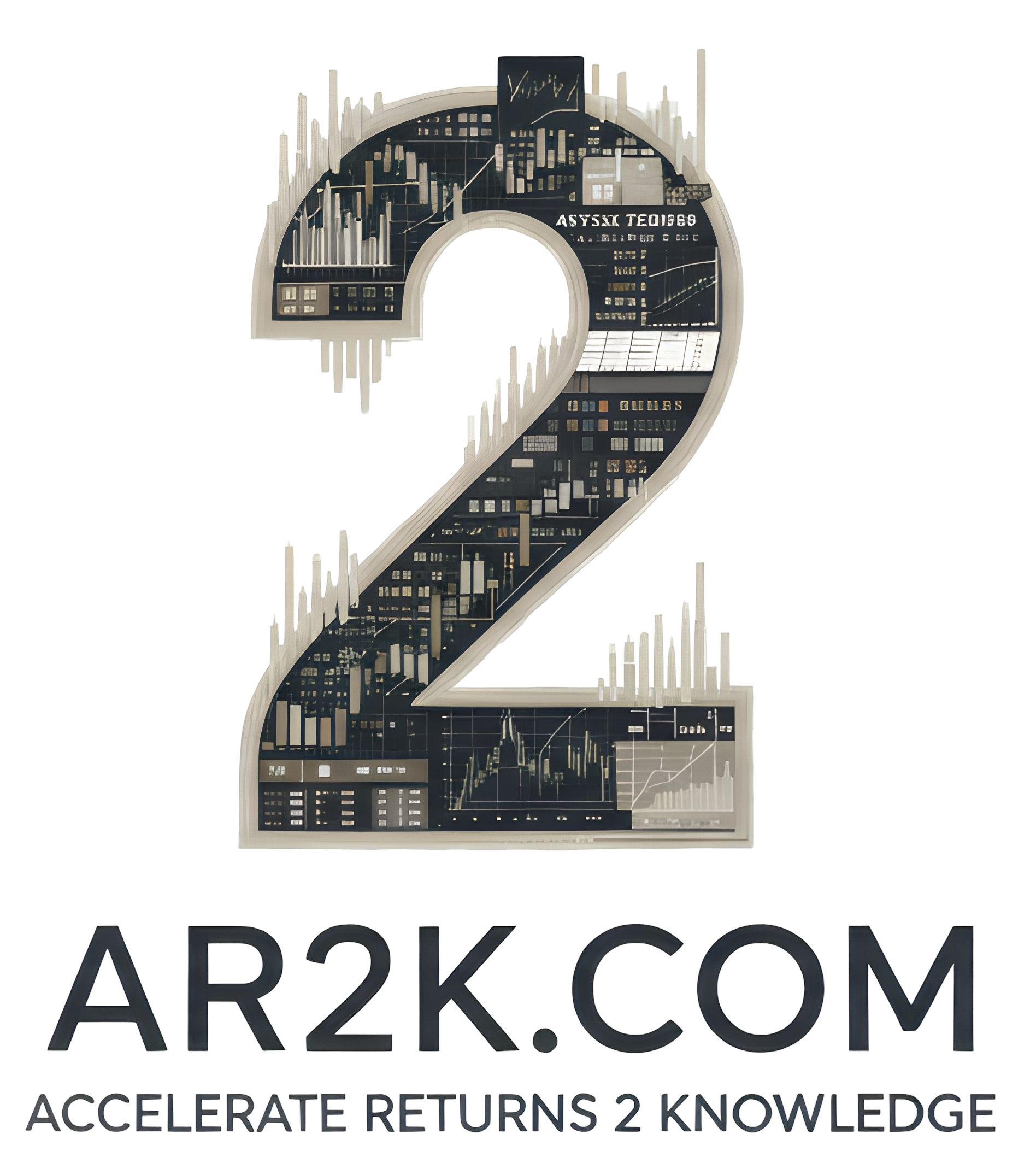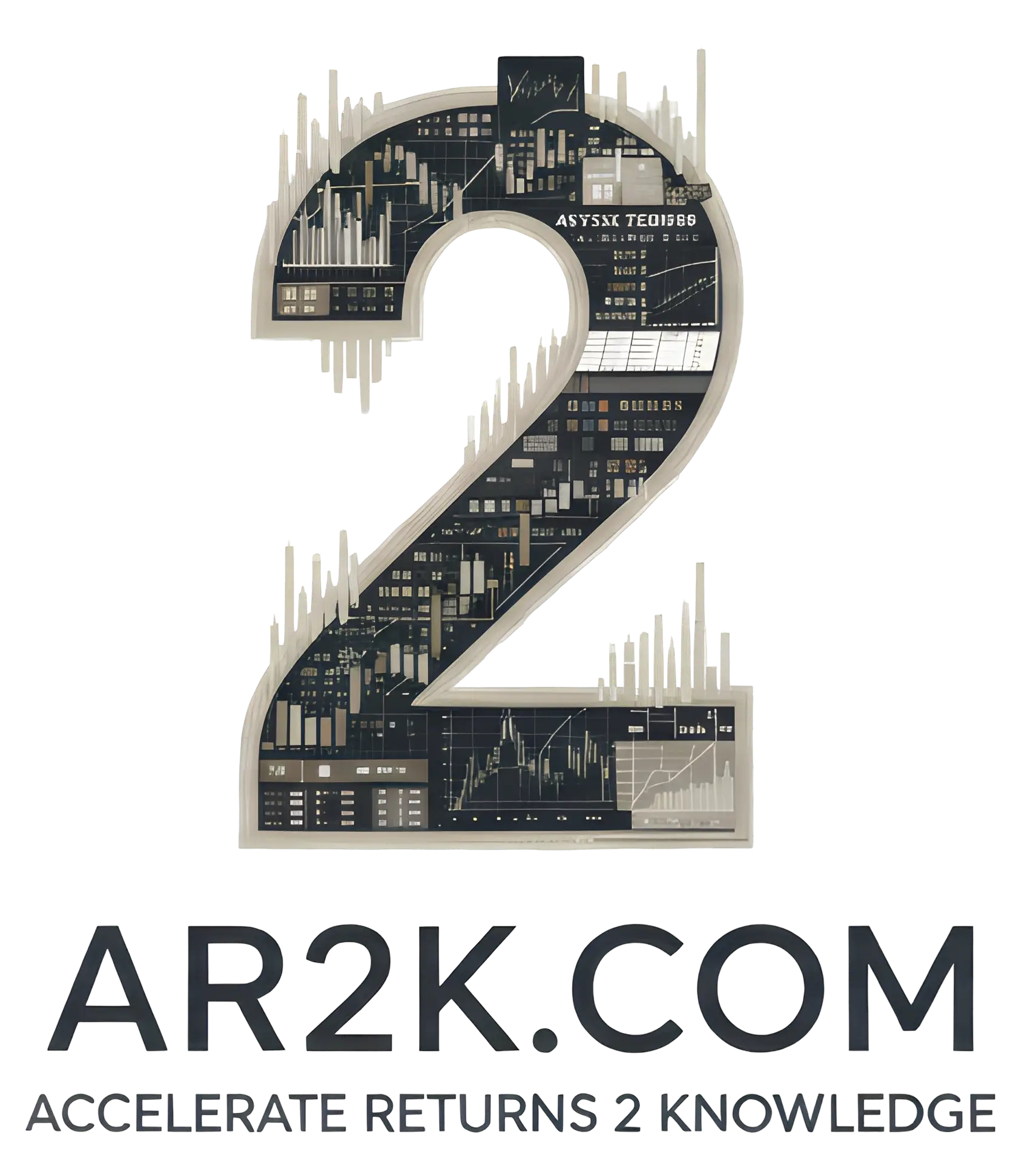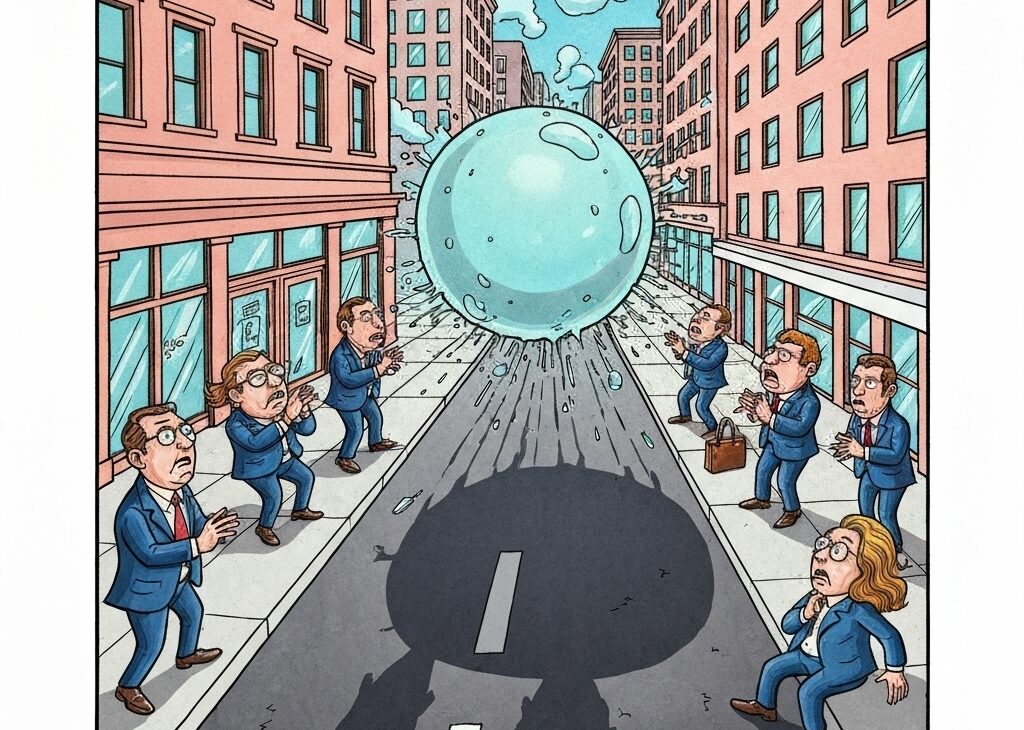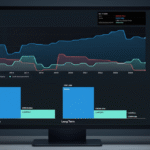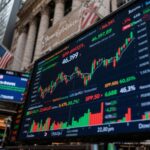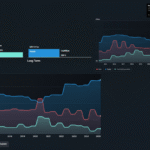Executive Summary
After nearly two years of unprecedented enthusiasm surrounding artificial intelligence investments, Wall Street is beginning to show signs of skepticism toward the AI trade. Recent market developments, including Oracle’s unusual debt financing and concerns about circular spending patterns, have prompted analysts to reassess the sustainability of the AI boom. This paper examines the emerging doubts about AI’s investment trajectory and the potential risks facing investors in this space.
The Current State of AI Market Sentiment
Despite continued strength in major market indices, subtle shifts in investor sentiment toward AI-related investments have become increasingly apparent. The Nasdaq Composite recently faced pressure from AI-related stocks, nearly experiencing its longest losing streak since April before recovering to positive territory. However, this recovery came at the cost of breaking a three-week winning streak, suggesting underlying market concerns about AI valuations.
The scale of AI’s market dominance cannot be understated. Since ChatGP’s launch in November 2022, a concentrated group of 41 AI-associated stocks has driven 75% of the S&P 500’s advance, according to J.P. Morgan Asset Management’s Michael Cembalest. These companies have accounted for 80% of corporate earnings growth and an overwhelming 90% of capital spending growth, highlighting the market’s heavy dependence on AI-related performance.
Emerging Red Flags: The Circular Financing Concern
One of the most significant concerns raised by Wall Street analysts involves the increasingly circular nature of AI spending. Steve Sosnick, chief strategist at Interactive Brokers, has highlighted the “dangerously insular” spending patterns within the AI ecosystem. The four major hyperscalers—Microsoft, Amazon, Meta, and Alphabet—represent Nvidia’s largest customers, while Nvidia itself maintains substantial business relationships with companies like CoreWeave and Super Micro Computer.
This interconnected spending pattern raises questions about the sustainability of growth when companies within the ecosystem are essentially funding each other’s expansion. The concern becomes more acute when considering that some of these interconnected companies, such as Super Micro, have experienced significant volatility, with shares yet to return to their early 2024 peaks.
The Debt-Fueled Expansion Risk
Oracle’s recent “unusual” jumbo bond deal to finance its partnership with OpenAI represents a potentially dangerous shift in how AI expansion is being funded. Previously, AI spending had been primarily financed by cash-rich companies like Microsoft, Meta, Alphabet, and Amazon, who could afford investments from their operating cash flows. Oracle’s decision to leverage debt financing signals a new phase that could transform the AI build-out into an “arms race,” with companies potentially rushing to borrow funds for competitive positioning.
This shift toward debt financing raises the specter of the telecom bubble from the late 1990s, when companies borrowed heavily to build fiber-optic infrastructure. Many of these companies, including Global Crossing, eventually filed for bankruptcy when the promised returns failed to materialize quickly enough to service their debt obligations.
Historical Parallels: Lessons from the Dot-Com Era
Several analysts have drawn explicit comparisons between the current AI boom and the dot-com bubble of the late 1990s. The parallels are particularly striking in the telecommunications sector, where massive investments in fiber-optic cable infrastructure led to significant overcapacity and subsequent corporate failures.
Cisco Systems provides a cautionary tale from this era. Despite briefly becoming the world’s most valuable company during the dot-com boom, its split-adjusted market value has never returned to its early 2000 peak. The concern among analysts is that AI infrastructure investments could face a similar “dark fiber moment,” where technological efficiencies or market saturation leads to massive underutilization of expensive infrastructure assets.
Citadel’s Ken Griffin has noted “obvious echoes of the dot-com bubble” in the current AI moment, while Greenlight Capital’s David Einhorn has warned that unchecked data-center spending could “demolish enormous amounts of capital.”
Technical and Fundamental Warning Signs
Beyond the fundamental concerns, technical indicators suggest the AI trade may be becoming overextended. The Global X Artificial Intelligence & Technology ETF reached its most overbought level since inception, with its 14-day relative-strength index hitting 82.41. Such extreme readings have historically preceded market corrections in AI-related investments.
Nvidia, often considered the bellwether of AI investment sentiment, has shown concerning price action, with shares essentially flat over nearly two months despite the broader AI narrative. This stagnation in the sector’s leading stock suggests that even positive AI developments may already be fully reflected in current valuations.
Potential Constraints and Risks
Power and Infrastructure Limitations
The aggressive expansion of data centers has created substantial demand for electrical power, leading to rising electricity prices for consumers in certain markets. These power constraints could fundamentally limit the pace and scale of future AI infrastructure development, potentially creating bottlenecks that slow the sector’s growth trajectory.
Technological Disruption Risk
Cembalest identifies the emergence of competitive chip ecosystems, particularly from Chinese firms like Huawei and SMIC, as the biggest risk facing the current AI market structure. Success by these companies in developing cutting-edge chip alternatives could undermine Nvidia’s technological dominance and disrupt the entire AI investment thesis.
Model Efficiency and Overcapacity
The Barclays research team has raised concerns about potential AI model improvements that could lead to greater efficiency, potentially creating excess data-center capacity. This scenario, reminiscent of the January DeepSeek-inspired selloff, remains a persistent concern as AI technology continues to evolve rapidly.
Market Structure and Concentration Risk
The extreme concentration of AI gains in a small number of stocks creates systemic risk for the broader market. With 41 stocks driving three-quarters of the S&P 500’s advance, any significant correction in AI-related names could have outsized negative impacts on major indices.
This concentration also means that investors with broad market exposure through index funds are inadvertently taking concentrated bets on the AI sector’s continued success, often without fully understanding their exposure levels.
Investment Implications and Recommendations
For Individual Investors
Individual investors should carefully assess their exposure to AI-related stocks, particularly through index funds and ETFs. While the AI revolution likely represents a genuine technological shift, current valuations may not provide adequate margin of safety for new investments.
Diversification becomes crucial in this environment, as does a clear understanding of the circular relationships between major AI companies. Investors should be particularly cautious about companies that have taken on significant debt to finance AI infrastructure investments.
For Institutional Investors
Institutional investors need to develop more sophisticated frameworks for evaluating AI investments, moving beyond simple growth projections to consider infrastructure constraints, competitive dynamics, and debt sustainability. The historical precedents from the telecom bubble provide valuable lessons about the risks of infrastructure overbuilding.
Risk management strategies should account for the possibility of sudden corrections in AI-related stocks, given their outsized influence on major indices and their interconnected business relationships.
Conclusion
While the artificial intelligence revolution represents a genuine technological advancement with significant long-term potential, the current investment landscape shows concerning parallels to previous technology bubbles. The shift toward debt financing, circular spending patterns, and extreme market concentration suggest that investors should approach AI investments with greater caution than has been evident over the past two years.
The key for investors is distinguishing between the long-term potential of AI technology and the short-term sustainability of current market valuations and spending patterns. History suggests that transformative technologies often experience boom-bust cycles before settling into sustainable growth patterns. The current AI market may be approaching the end of its initial euphoric phase, requiring more discriminating investment approaches going forward.
The emergence of skeptical voices on Wall Street, combined with technical warning signs and fundamental concerns about financing sustainability, suggests that the AI investment landscape is entering a more mature and potentially volatile phase. Investors who recognize these changing dynamics and adjust their strategies accordingly will be better positioned to navigate the challenges and opportunities ahead.
